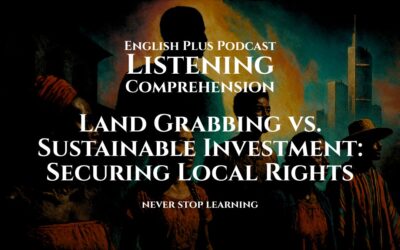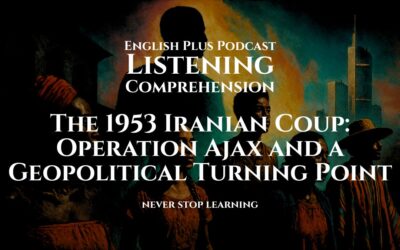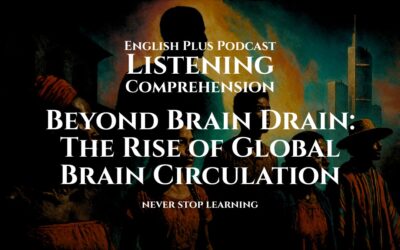Sharpen Your Listening Skills: The Concept of Self-Identity
Welcome to your listening comprehension practice session! Excelling in the listening section of international exams like the TOEFL, IELTS, or SAT isn’t just about understanding words; it’s about understanding ideas. The key is active listening. Before you listen, take a moment to think about the topic. Today, it’s “Exploring the Concept of Self-Identity.” What do you already know? What words come to mind? This pre-listening exercise warms up your brain.
As you listen, don’t just be a passive receiver of information. Be a detective. Listen for signposting language—phrases like “First,” “In contrast,” or “To conclude”—that signal the speaker’s direction. Try to create a mental map of the lecture. Note down key names, dates, and concepts. You don’t need to write full sentences; quick notes are perfect. This practice will help you follow complex academic discussions and pinpoint the answers you need. Let’s begin.
Listening Audio
[ppp_patron_only level=5]
[/ppp_patron_only]
Listening Transcript: Please do not read the transcript before you listen and answer the questions.
Exploring the Concept of Self-Identity
Hello everyone. Today, we embark on an introspective journey to explore a concept that is fundamental to the human experience: the concept of self-identity. What does it mean to be ‘you’? Is your identity a fixed, stable entity you are born with, or is it a fluid, ever-changing construct? This question has captivated philosophers, psychologists, and sociologists for centuries. Today, we’ll delve into some of the most influential perspectives that seek to unravel this multifaceted concept.
Let’s start by defining our terms. At its core, self-identity is the recognition of one’s potential and qualities as an individual. It’s the composite of your beliefs, values, personality, and the various social roles you occupy. It’s not a single, monolithic thing. Think of it more as a tapestry woven from many threads. These threads include your personal identity—those unique attributes like your personality traits, ambitions, and personal experiences—and your social identity, which is derived from the groups you belong to, such as your nationality, your family, your profession, or your cultural background.
One of the foundational figures in the psychology of identity is Erik Erikson. He proposed a theory of psychosocial development that spans the entire lifecycle. According to Erikson, the formation of a coherent identity is the primary task of adolescence, a stage he famously termed ‘Identity versus Role Confusion.’ During these formative years, teenagers grapple with questions of who they are and what they want to do with their lives. They might experiment with different personas, styles, and belief systems. A successful navigation of this stage results in a strong sense of self, what Erikson called ‘identity achievement.’ However, failing to resolve this crisis can lead to role confusion, a state of uncertainty about one’s place in the world. This doesn’t mean identity is set in stone after adolescence. Erikson saw it as a lifelong process, with each stage of life presenting new challenges and opportunities for identity refinement.
Moving from the psychological to the sociological, the concept of the ‘social self’ offers a compelling counterpoint. Sociologists argue that our sense of self is not born in a vacuum but is profoundly shaped through our interactions with others. The American sociologist George Herbert Mead was a pioneer of this view. He contended that the self emerges from social experience. It’s a reciprocal relationship: society influences the individual, and the individual, in turn, influences society. A key part of Mead’s theory is the idea of ‘taking the role of the other.’ Essentially, we learn to see ourselves through the eyes of others. As children, this might be through the eyes of our parents or caregivers—our ‘significant others.’ As we mature, we begin to consider the perspective of society as a whole, what Mead called the ‘generalized other.’ Our actions, beliefs, and even our self-worth are often evaluated based on these perceived societal norms and expectations.
This brings us to a crucial aspect of identity: its fluidity. In our contemporary, globalized world, identities are perhaps more dynamic than ever before. We are constantly navigating different social contexts. Think about how you present yourself at work, with your family, with your close friends, and online. Each context might bring a different facet of your identity to the forefront. This isn’t about being inauthentic; rather, it reflects the complexity of who we are. The digital age has added another layer to this. Online platforms allow us to curate and present idealized versions of ourselves. This ‘digital self’ can be a source of affirmation and connection, but it can also create a disconnect between our online persona and our offline reality, sometimes leading to feelings of inadequacy or anxiety.
Furthermore, we must acknowledge the role of culture in shaping identity. In individualistic cultures, common in the West, identity is often seen as personal, unique, and independent. The emphasis is on self-reliance and personal achievement. In contrast, in collectivist cultures, prevalent in many parts of Asia, Africa, and Latin America, identity is more interdependent and defined by one’s relationships and group memberships. The well-being of the group often takes precedence over individual desires. Neither approach is inherently superior, but understanding this cultural dimension is vital to appreciating the diverse ways in which humans construct their sense of self.
So, to return to our original question: is identity fixed or fluid? The overwhelming consensus from both psychology and sociology is that it is both. There may be core aspects of our personality and values that remain relatively stable over time, providing us with a sense of continuity. This is our anchor. However, our identity is also constantly being negotiated, redefined, and co-created through our experiences, our relationships, and our engagement with the world around us. It is a lifelong project, a continuous dialogue between our internal world and the external social forces that shape us. Understanding this dynamic interplay is the key to understanding the intricate and beautiful complexity of self-identity. Thank you.
Listening Quiz
Keywords & Phrases
- Introspective: (adjective) This means looking inward to examine your own thoughts and feelings. We used it at the start of the lecture— “an introspective journey”—to signal that the topic would be about self-examination and personal understanding.
- Multifaceted: (adjective) This describes something that has many sides or aspects, like a diamond. In the lecture, we said identity is a “multifaceted concept” to emphasize that it’s not simple; it’s made up of many different parts.
- Monolithic: (adjective) This word describes something that is large, powerful, and uniform, as if carved from a single stone. We used it in the negative—”not a single, monolithic thing”—to contrast with the idea of identity being multifaceted.
- Formative years: (phrase) This refers to the period, typically in youth or adolescence, when a person’s character and beliefs are most strongly influenced. We used it when discussing Erikson’s theory, as he placed great importance on the “formative years” for identity development.
- Grapple with: (phrasal verb) This means to struggle to deal with or understand a difficult problem or subject. We said teenagers “grapple with questions of who they are,” which paints a picture of them actively struggling to find answers.
- Reciprocal relationship: (phrase) This describes a situation where two people or groups have a mutual effect on each other. We used it to explain Mead’s idea that there’s a “reciprocal relationship” between you and society; you are shaped by it, and you help shape it.
- In a vacuum: (idiom) This idiom means to be isolated from outside influences. When we said the self is “not born in a vacuum,” we meant that our identity is impossible to separate from the social world around us.
- Curate: (verb) This verb usually means to select and organize items for a museum or exhibition. In a modern sense, it means to carefully choose and present content. We talked about how people “curate” their “digital self,” meaning they carefully select photos and information to present a particular image online.
- Inadequacy: (noun) This is the feeling of not being good enough. We mentioned that the difference between our idealized online self and our real self can lead to “feelings of inadequacy.”
- Dynamic interplay: (phrase) ‘Dynamic’ means constantly changing and active, while ‘interplay’ refers to the way things interact with each other. The phrase “dynamic interplay” was used in the conclusion to describe the complex, back-and-forth relationship between our stable inner self and the ever-changing social world.










0 Comments